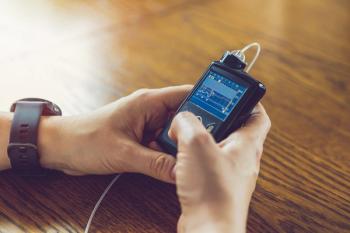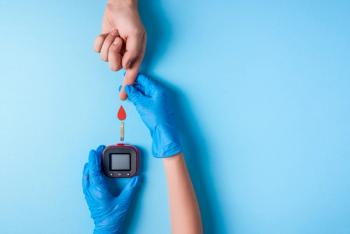
- Drug Topics July 2020
- Volume 164
- Issue 7
Addressing Diabetes Management Disparities in Minority Children
“We know that if we don’t address these potential difficulties before they occur, the burden to families can be devastating and the health care costs are tremendous.”
New research presented virtually at the American Diabetes Association 80th Scientific Sessions determined key low-intensity initiatives that address disparities in diabetes management for African American and Hispanic children in the United States.
The study, presented by Ashley Butler, PhD, associate professor of pediatrics at Baylor College of Medicine and clinical psychologist at Texas Children’s Hospital, discussed the significant gaps in glycemic control among African American and Hispanic children compared with nonminority children. Butler, a behavioral scientist with expertise in health disparities research methods, stressed the prevalence of these gaps and their consequences.
“We have a focus within our organizations on preventing complications of diabetes,” Butler said in the presentation. “That’s because we know that if we don’t address these potential difficulties before they occur, the burden to families can be devastating and the health care costs are tremendous.”
According to study investigators, the 2 main considerations in considering diabetes management disparity are how long the child has had diabetes and when diabetes was diagnosed. Recent studies show disparities in glycemic control begin early for African American and Hispanic youth with type 1 diabetes—as early as 1 year from diagnosis. The data also point to the fact that these gaps persist; therefore, it’s important to intervene early, as disparities are worse for children who are diagnosed at 9 years or younger.
Butler stressed that more attention should be paid to less-intensive prevention strategies for African American and Hispanic children diagnosed with type 1 diabetes. Less-intensive prevention strategies are important for minority families, since the population is disproportionately positioned to experience challenges related to social determinants of health (SDOH).
“We are well aware that both African American and Hispanic youth in the US are overrepresented among those with lower socioeconomic status. And we know that there are particular socioeconomic conditions that are associated with economic status,” Butler said.
According to Butler, these SDOH include the following:
- Food insecurity
- Employment challenges
- School challenges
- Social integration
- Financial insecurity
Butler provided real-life examples of these social determinants that exemplify unmet social needs relevant to diabetes outcomes in African American and Hispanic children For example, 1 parent expressed concern that she is unable to check her phone during work, making it difficult to be able to easily be contacted by her child’s school. Minority children are also less likely to have a written plan for managing their diabetes, and are even less likely to have a nurse at their school.
Butler pointed to 3 universal strategies for influencing diabetes outcomes in this population:
- Community outreach
- Social needs screening and resource linkage
- Low-intensity social and behavioral support
Outreach events specifically tailored to this population, particularly children ages 5 to 10 years, have shown success through gauging the needs of families of children with diabetes. During these outreach programs, many families highlighted their interest in getting to know other families in their situation.
Personalized, written community resources that use inclusive language and images in their materials can also improve child health outcomes and reduce unmet social needs.
Low-intensity social and behavioral support is of particular significance for African American and Hispanic children with diabetes. SDOH often bleed into a family’s ability to attend supportive programs outside of regular medical appointments due to competing demands; when support is made more convenient, families are able to participate and improve their child’s diabetes management.
Convenience has recently taken the shape of telemedicine, and Butler similarly put forth the potential for telehealth resources to mitigate unmet social needs. Some initiatives have offered low-intensity at-home sessions, sometimes through videoconferencing of up to 5 families at 1 time. However, it is also important to consider ease of access to these resources, as socioeconomic status also can affect a child’s access to broadband and online resources.
“There really is a need to develop and implement low-intensity strategies for minority youth, particularly those who are newly diagnosed as well as families of younger children, and that multidisciplinary teams can use their expertise and innovation to implement…tailored community outreach, social needs screening and personalized resources, as well as behavioral interventions that can be assessed while the families are at home.”
Reference:
- Butler AM. Community and Family Based Strategies to Improve Type 1 Diabetes Management in African American and Latino School-Aged Children. Presented at: American Diabetes Association 80thAnnual Scientific Sessions, June 12-16; online.
Articles in this issue
over 5 years ago
Go to Bat for Patients in Needover 5 years ago
UMass Memorial Provides Model for Curbside Medication Deliveryover 5 years ago
Microbiome Research Calls for Due Diligence in Pharmacyover 5 years ago
COVID-19 Testing Is Not an Automatic Choice for Pharmacistsover 5 years ago
Psychedelic Medicines for Pain Go Mainstreamover 5 years ago
Pharmacies Must Prepare for a COVID-19 Vaccineover 5 years ago
Pharmacists Are Key Players in Asthma ManagementNewsletter
Pharmacy practice is always changing. Stay ahead of the curve with the Drug Topics newsletter and get the latest drug information, industry trends, and patient care tips.




























































































































